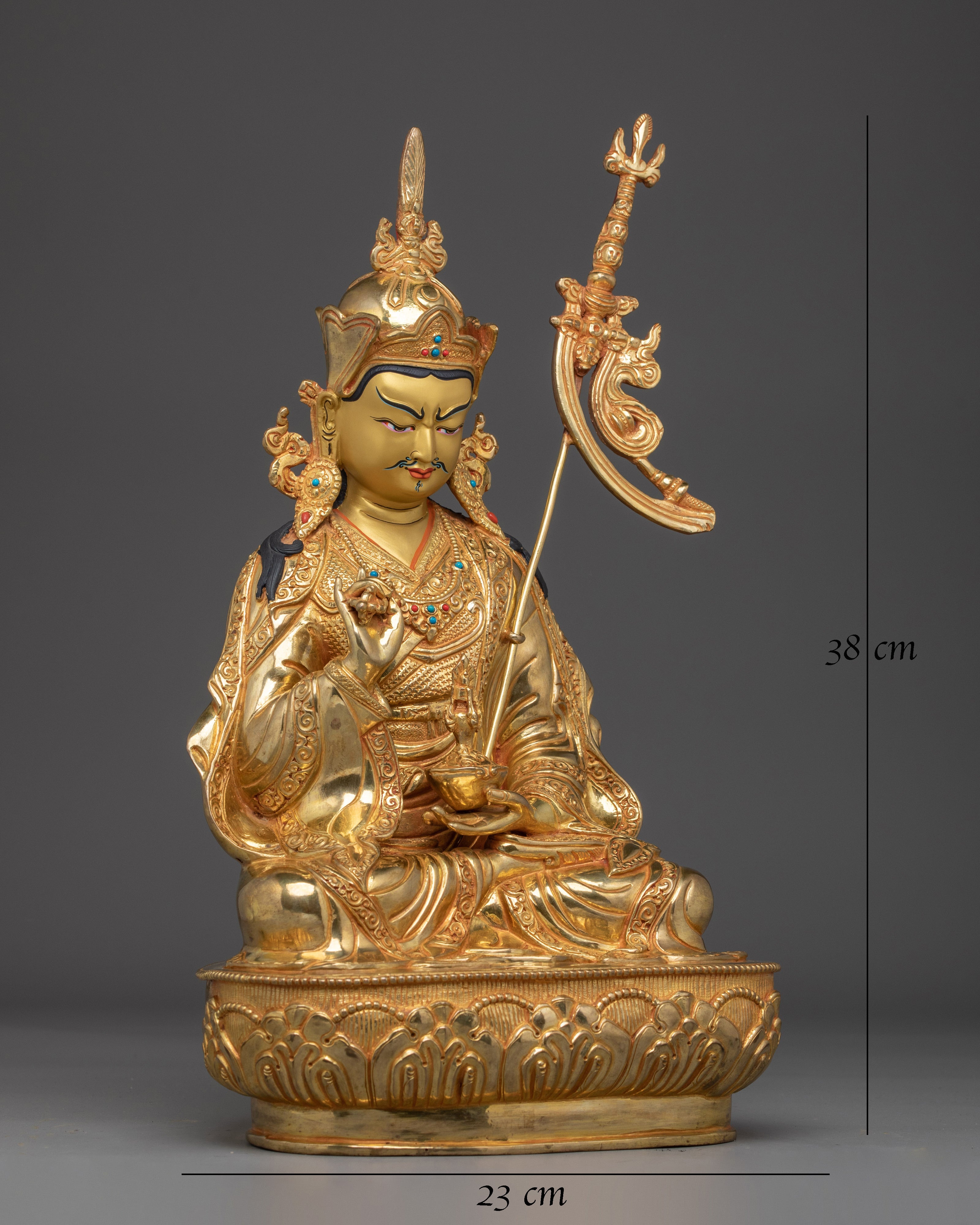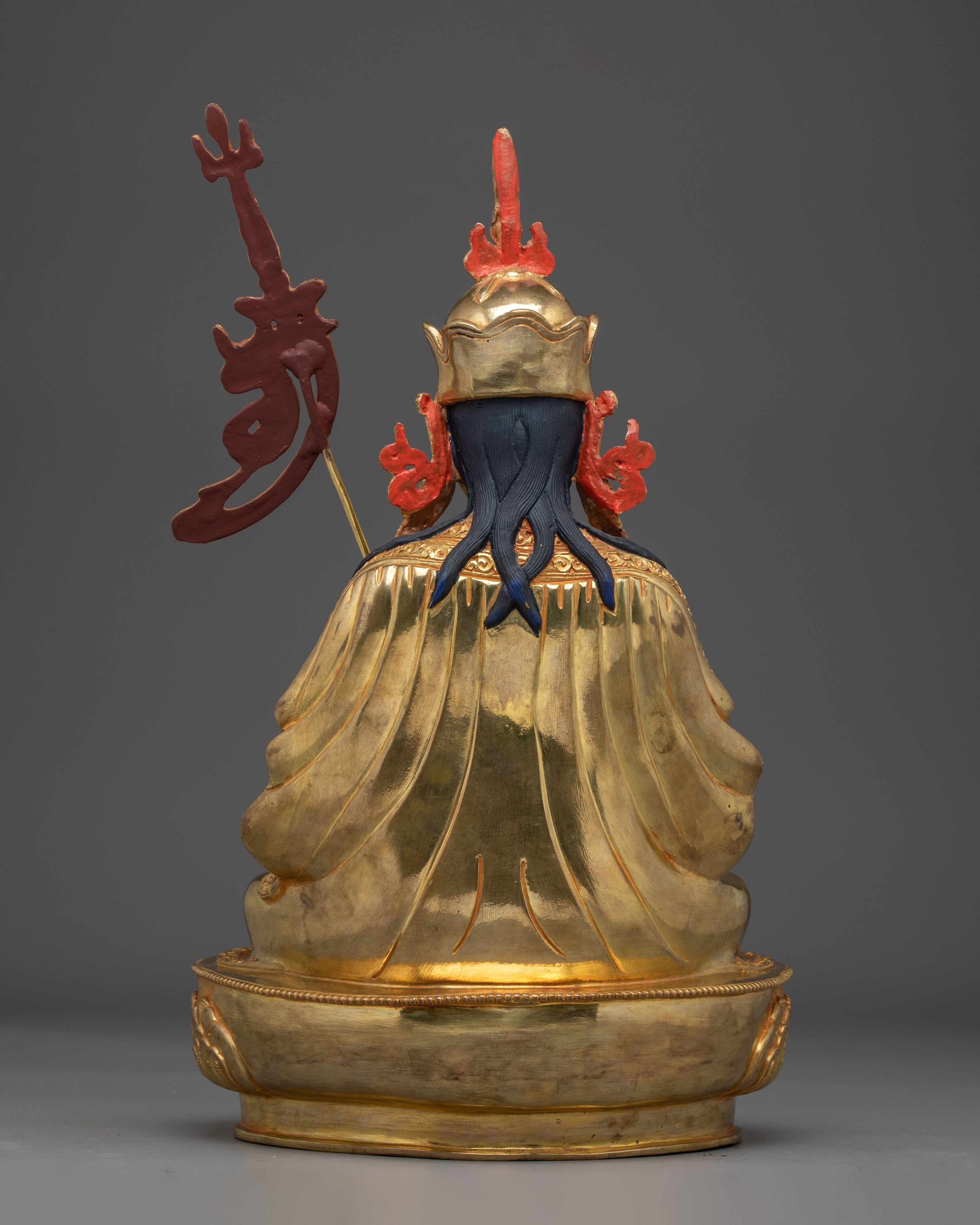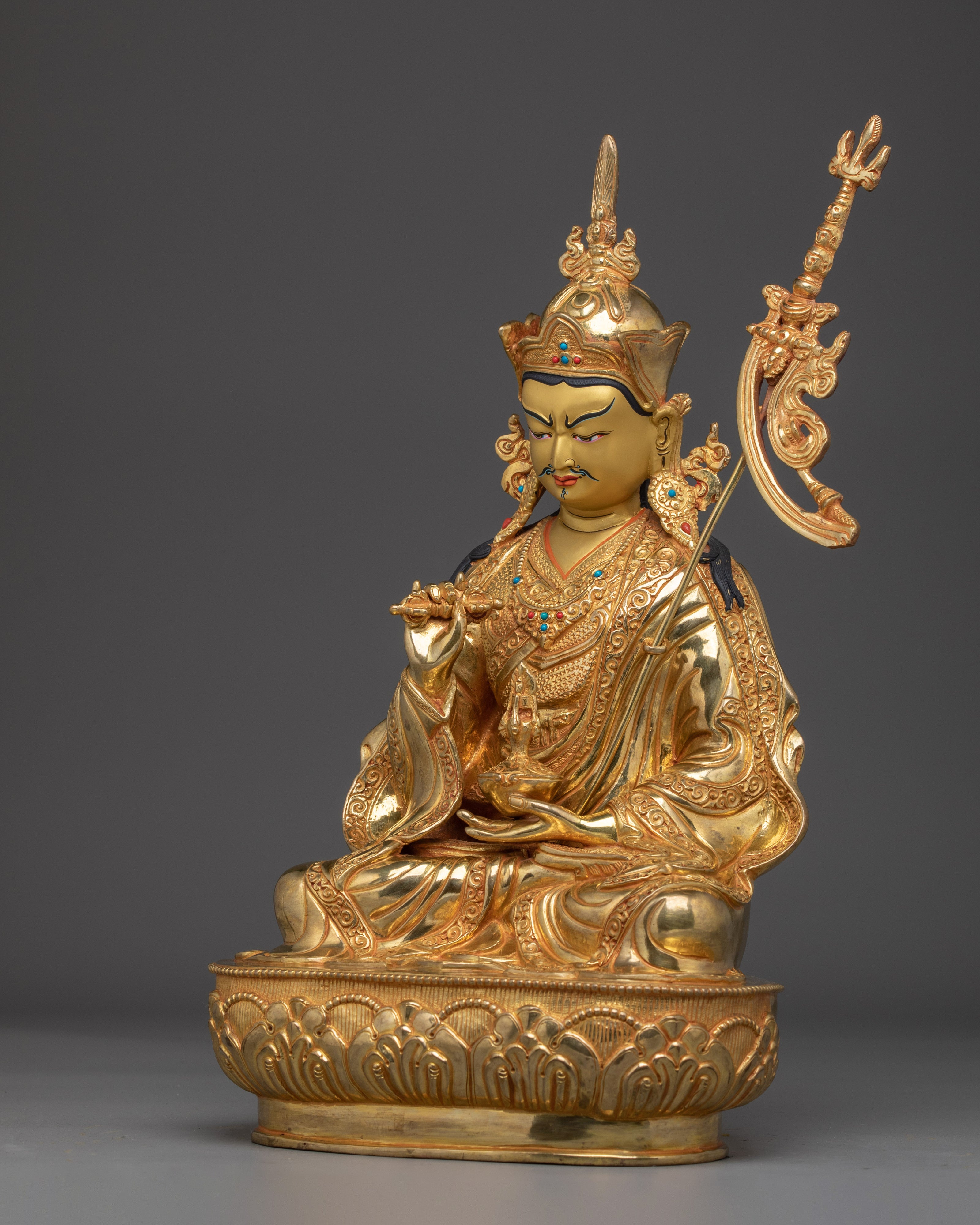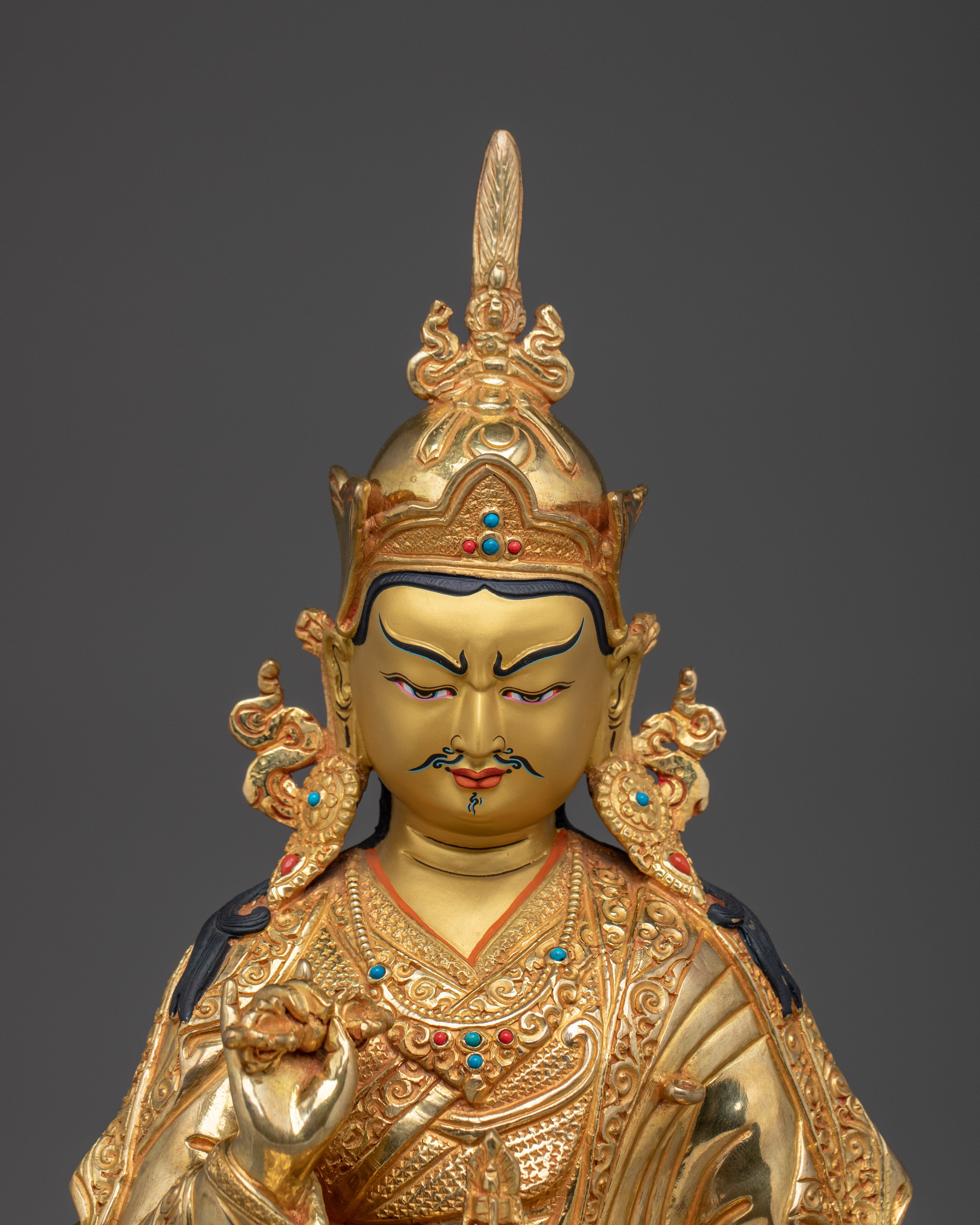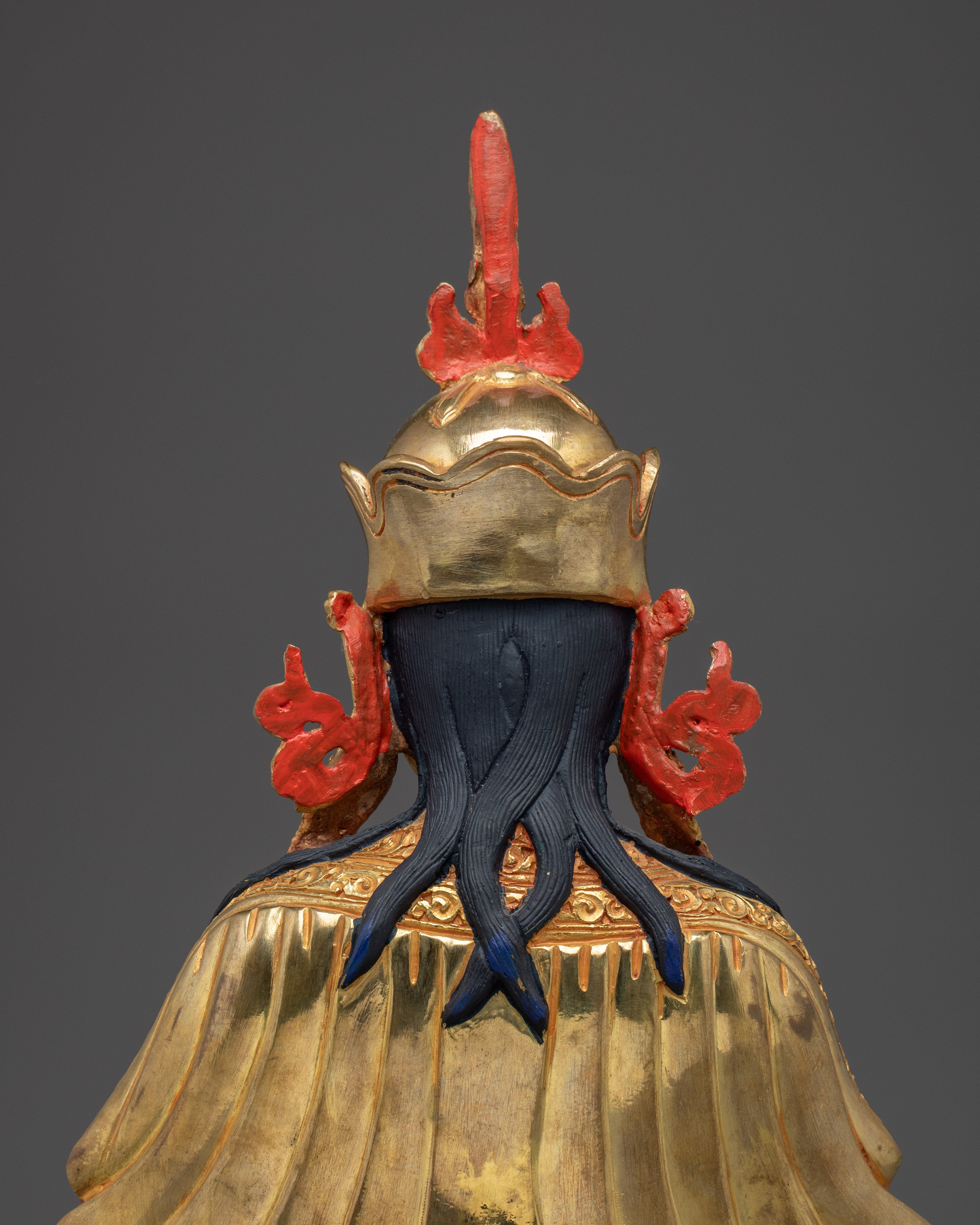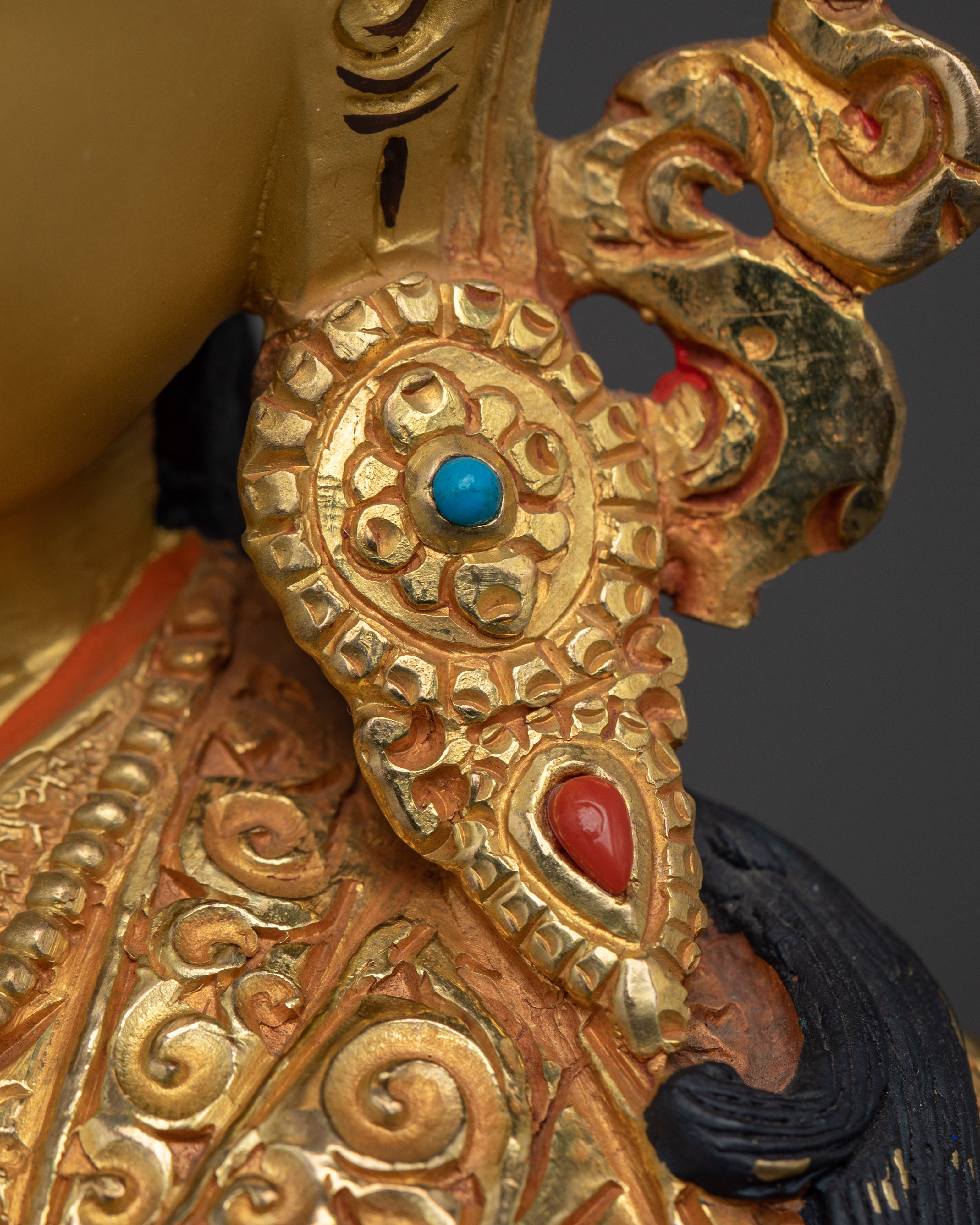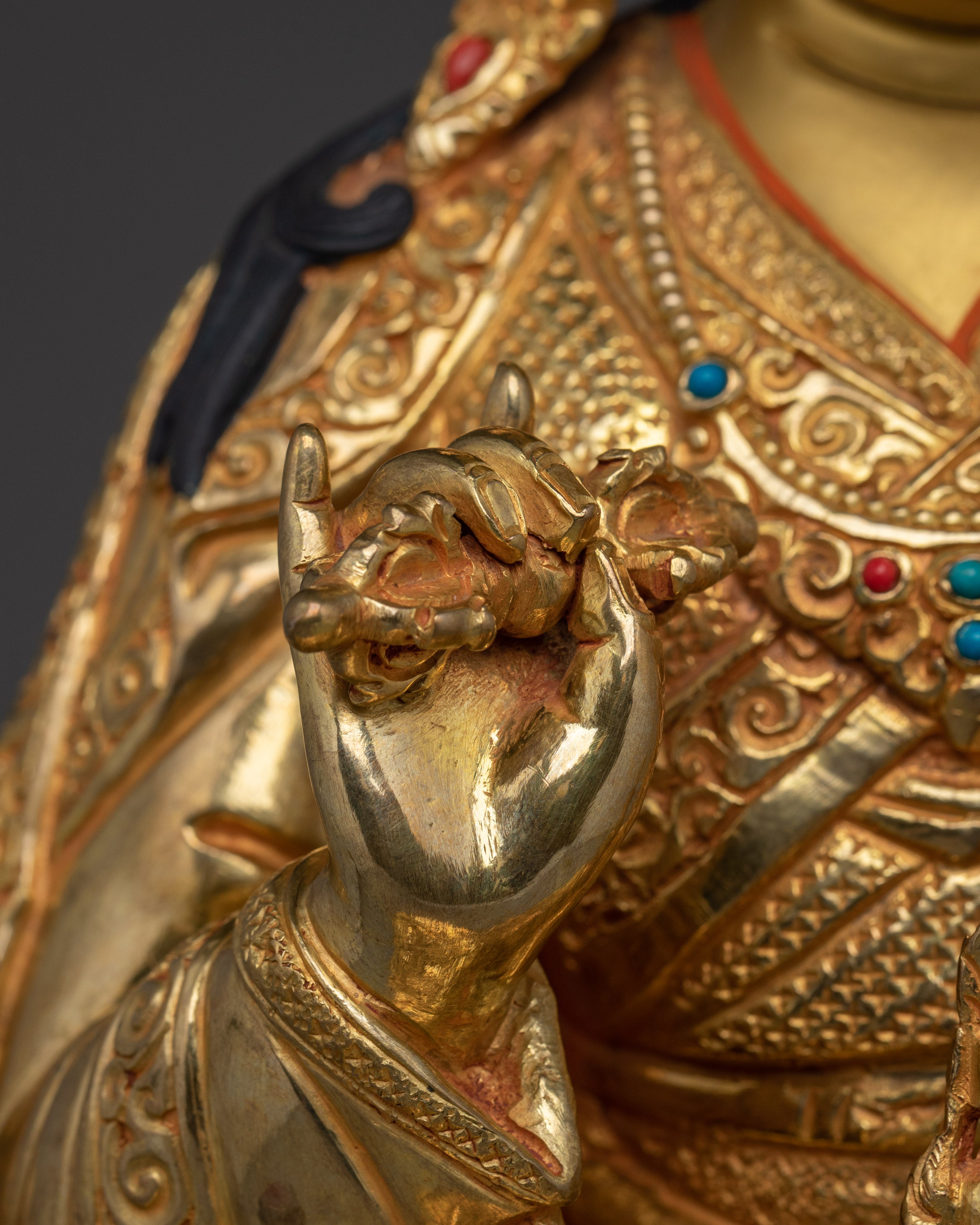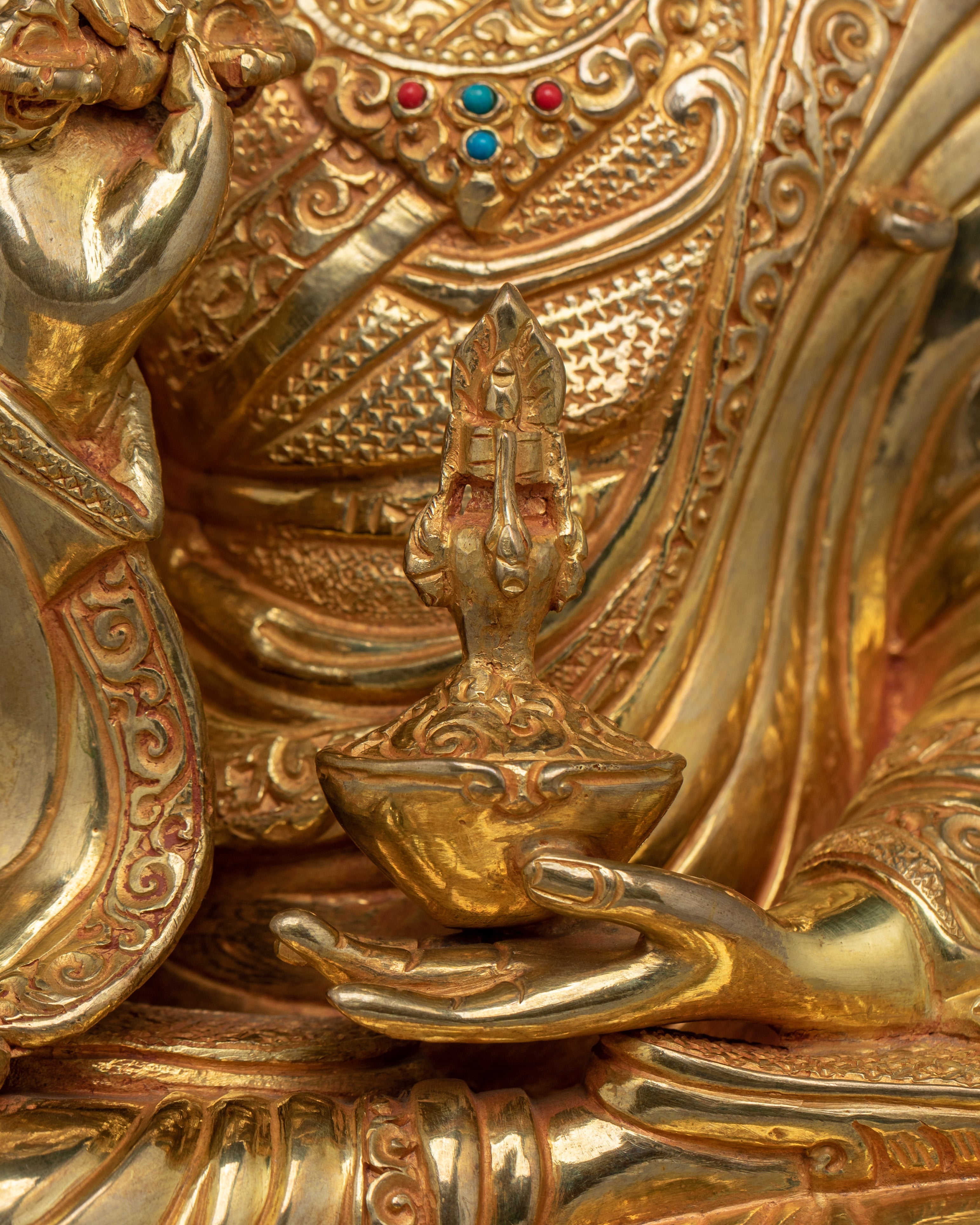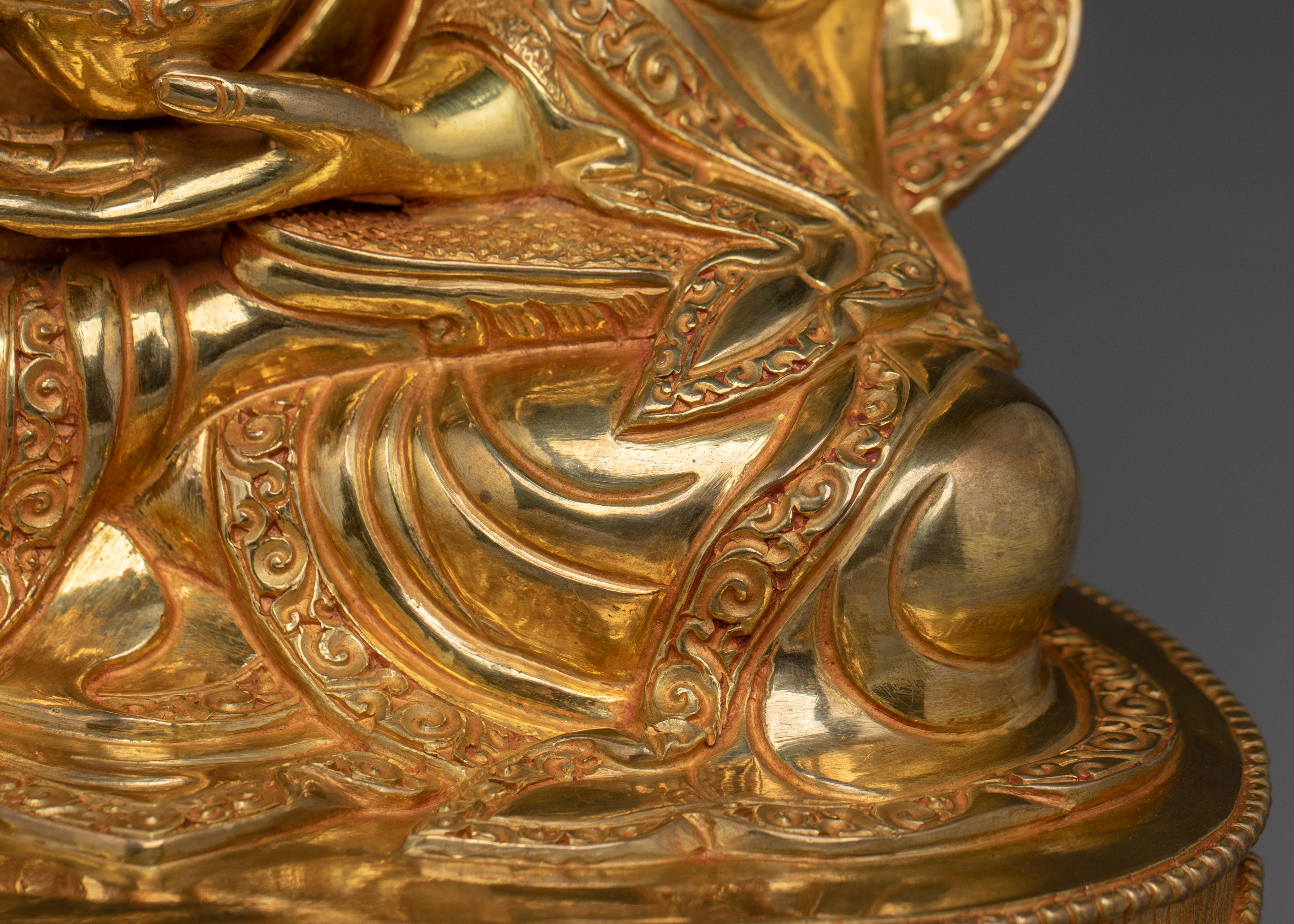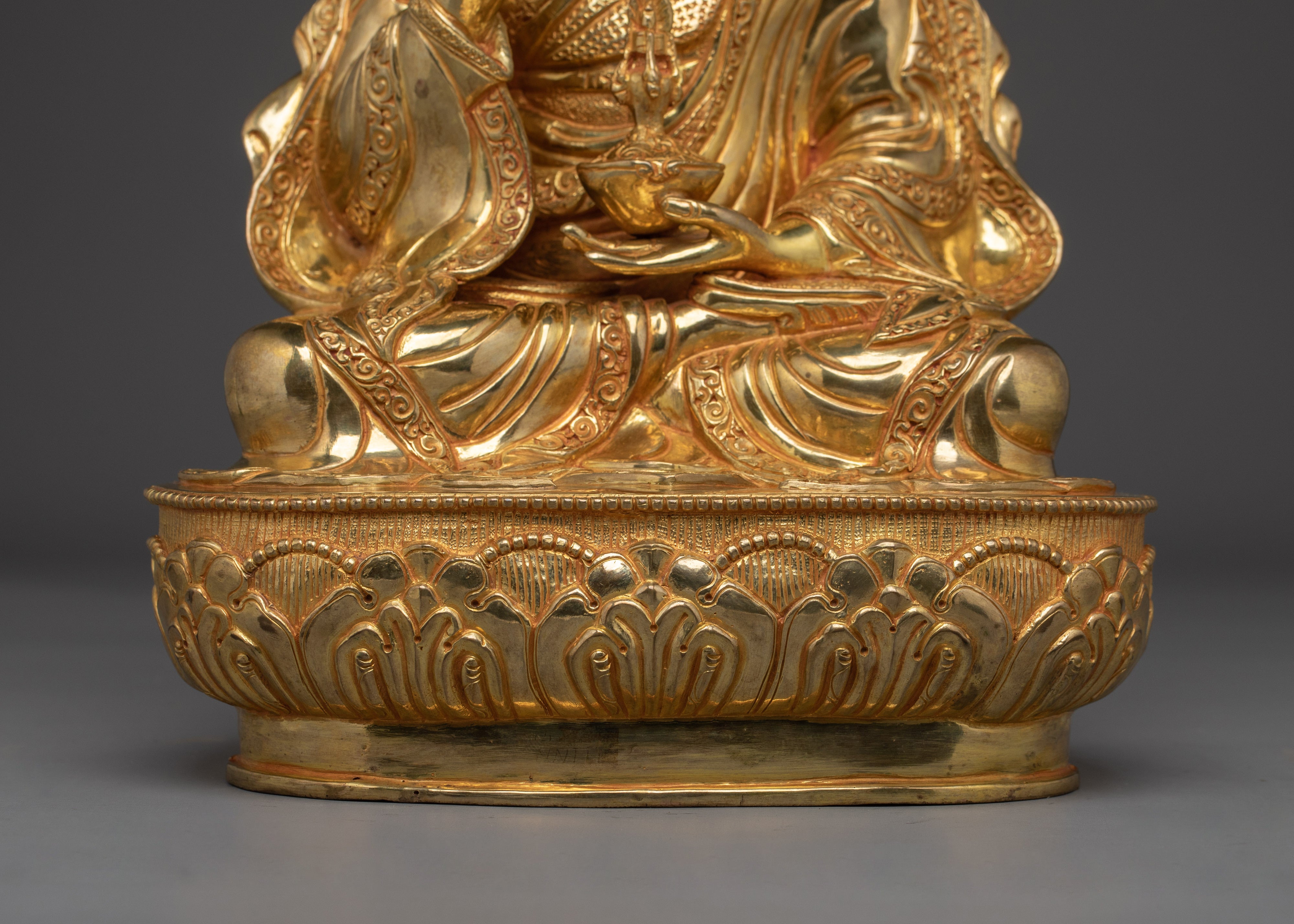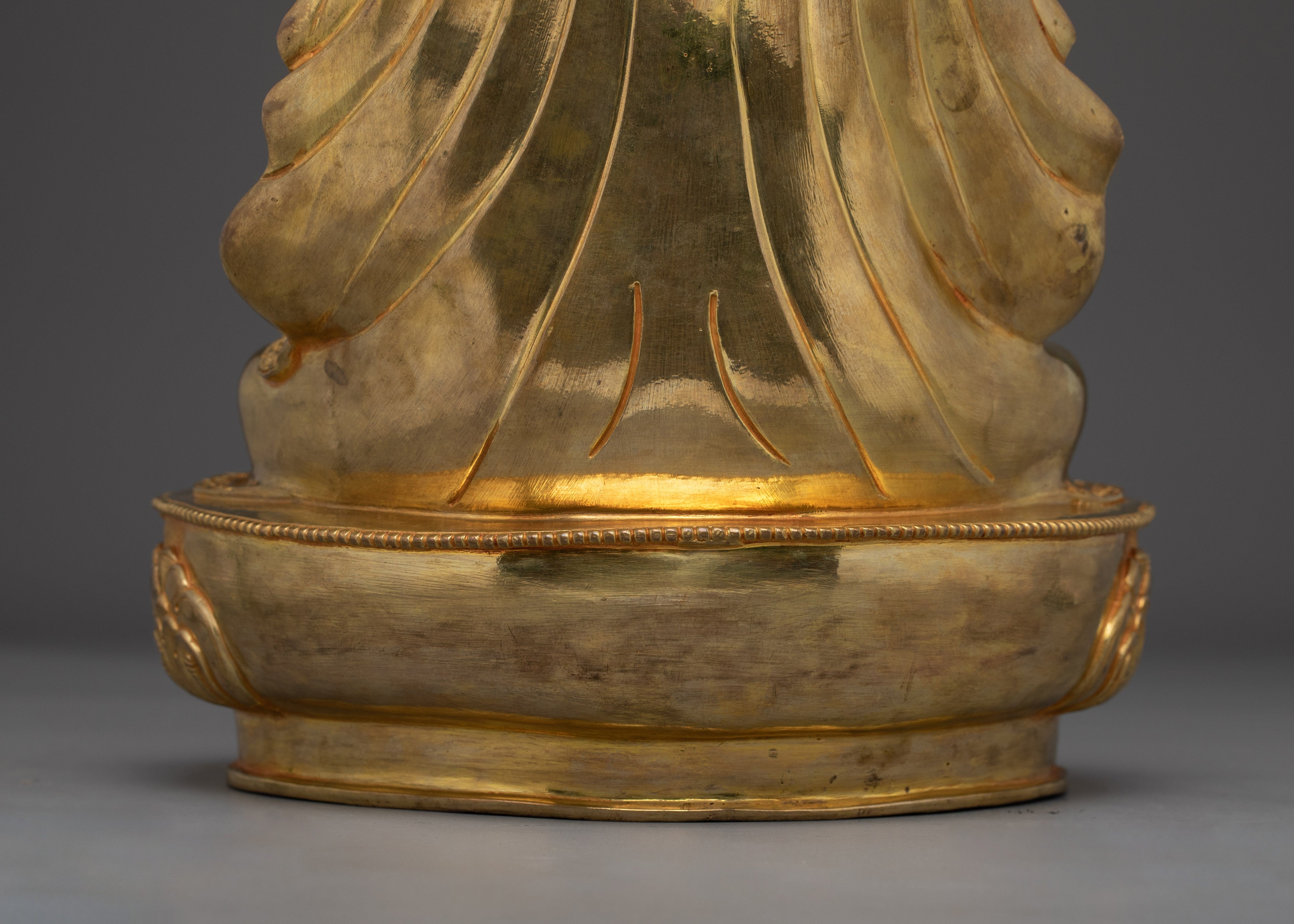Description
Handmade Guru Tsokye Statue | Buddhist Shrine
Guru Tsokye Statue stands 15” (38 cm) tall with a 9.1” (23 cm) base and weighs 4.83 kg. Meticulously handcrafted from copper, 24K gold gilding, gold and acrylic paintings, and gemstones. Representing the revered Tibetan Buddhist master, this statue embodies wisdom, compassion, and spiritual guidance. Perfect for altar display, meditation, or as a sacred gift, it brings profound blessings and inspiration into any spiritual space.
Guru Tsokye Dorje is depicted wearing a distinctive lotus hat, often adorned with five petals representing the five wisdoms, and sometimes featuring a sun and moon, symbolizing the union of method and wisdom. He holds a vajra (dorje) in his right hand, representing indestructible wisdom and the unbreakable nature of enlightened mind. His left hand holds a skull cup containing a vase filled with the nectar of immortality, symbolizing his mastery over death and the transmutation of obstacles into wisdom. Resting against his left shoulder is a katvanga, a tantric staff adorned with symbolic elements such as three severed heads, representing the transformation of ignorance, desire, and aversion into wisdom. He is seated in a meditative posture atop a lotus pedestal, signifying spiritual purity and his miraculous birth from a lotus on Lake Dhanakosha. His appearance combines compassion and fierceness, depicted in a semi-wrathful expression to illustrate his ability to protect practitioners and dispel obstacles on the spiritual path.
Size: 15”/38cm (Height) x 9.1”/23cm (Base)
Weight: 4.83 kg
Material: 24K Gold Gilded, Gold & Acrylic Paintings, Copper Body, Gemstones
A famous figure in Vajrayana Buddhism, Guru Tsokye Dorje is also known as Guru Padmasambhava in his incarnation as the "Lake-Born Vajra." He represents the transforming force of wisdom and compassion, having been miraculously born from a lotus on the revered Dhanakosha Lake. Tsokye Dorje is an example of enlightenment, representing the fusion of profound knowledge with deft methods. He is praised for his ability to overcome barriers, lead practitioners to emancipation, and spread esoteric truths. He is frequently seen in his iconography sitting among lotuses or waves, clutching a skull cup and vajra, which stand for indestructibility and the ultimate aspect of reality.


